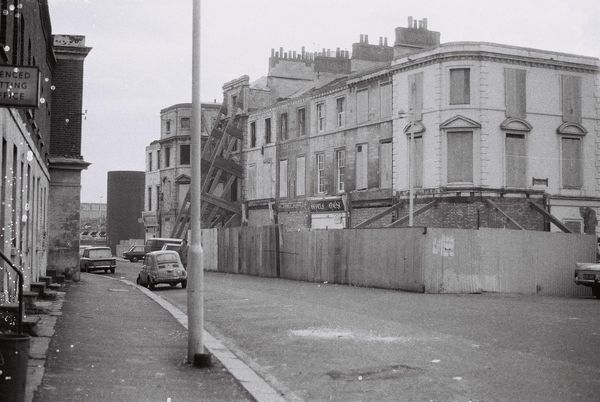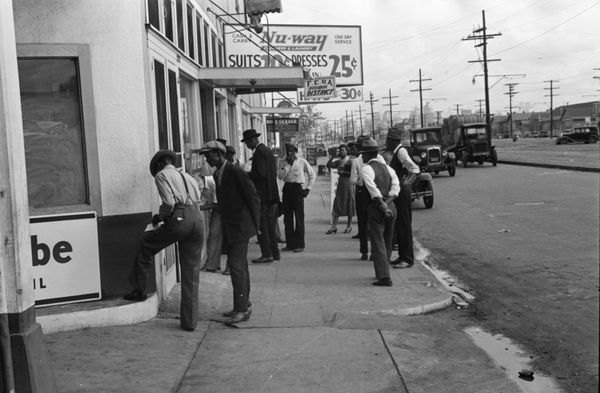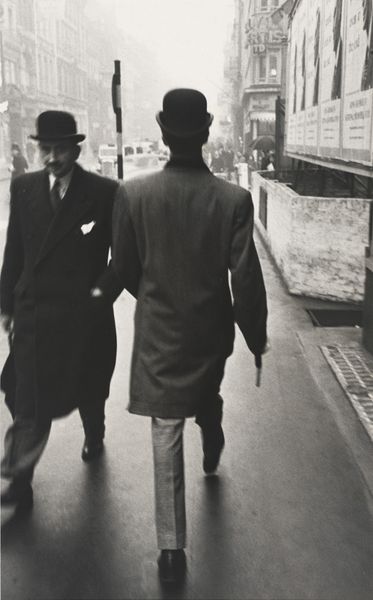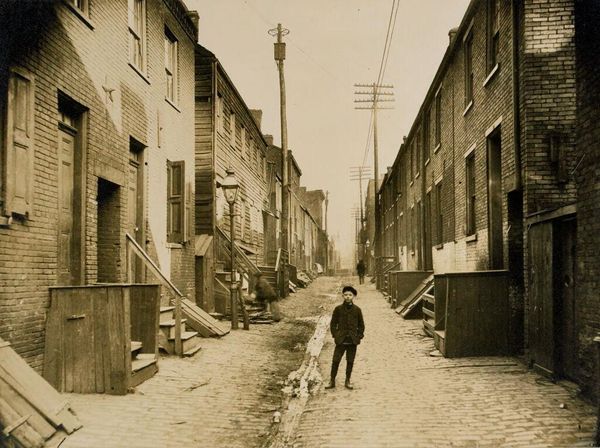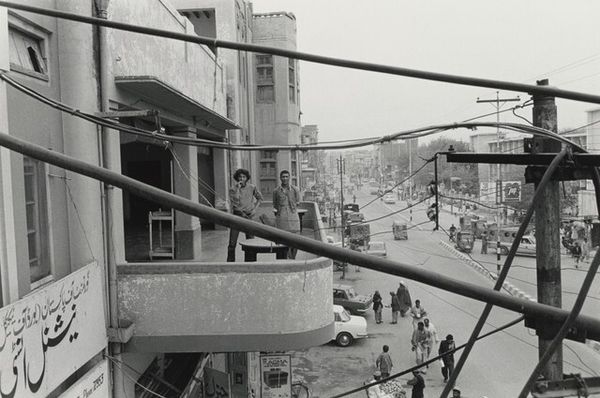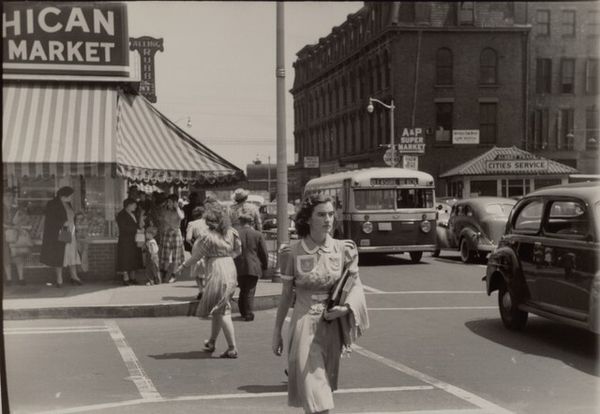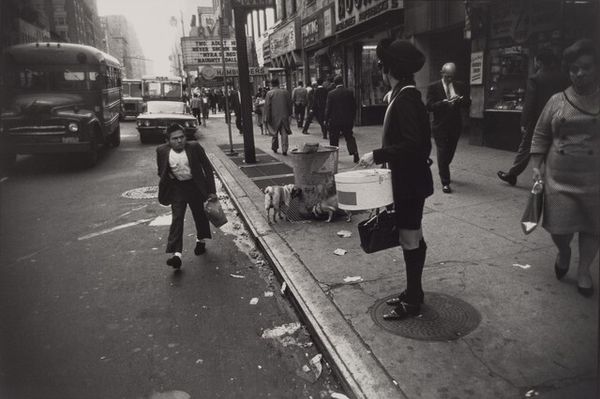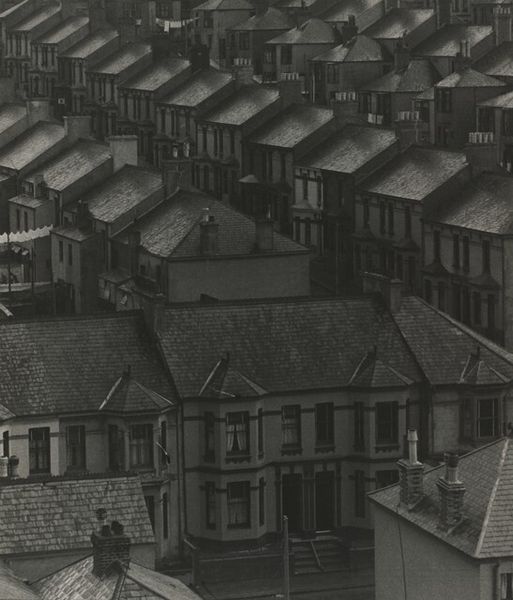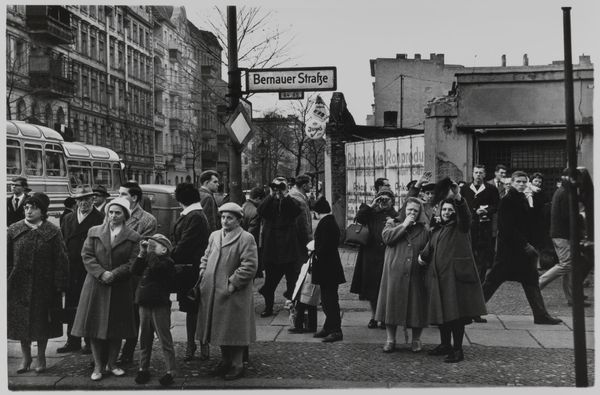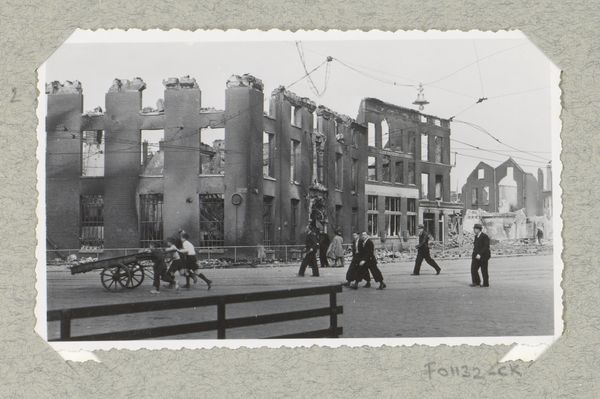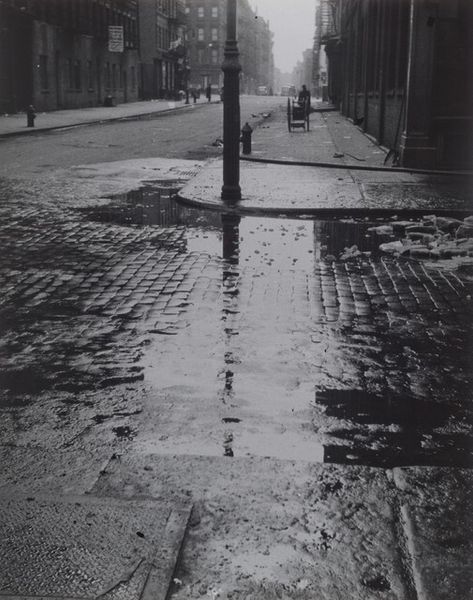
Dimensions: duration: 12 min
Copyright: © John Smith | CC-BY-NC-ND 4.0 DEED, Photo: Tate
Curator: This is John Smith’s 1976 film, "The Girl Chewing Gum," a 12-minute exploration of cinema. It seems so stark, grey, and urban. The composition is dominated by the buildings; the figures seem almost incidental. Editor: Incidental, perhaps, but the everyday is precisely the point. Smith is taking something utterly banal, a street scene, and drawing our attention to its construction. Look at the film's stock itself: how it reflects light, the visible grain. Curator: And then there's the title, "The Girl Chewing Gum." The focus on such a minor detail invites us to find meaning in the mundane. Perhaps she represents a rebellious spirit, a small act of defiance within a regulated environment? Editor: Or maybe it's about the act of chewing itself. The constant repetition, the jaw working – a form of labour, a processing of experience. It's all about the mechanics of seeing and being seen. Curator: A potent reminder that the simplest image can hold a wealth of social and symbolic layers. Editor: Exactly! Smith pulls back the curtain, exposing the gears and levers of how meaning is produced and consumed.
Comments
tate 6 months ago
⋮
http://www.tate.org.uk/art/artworks/smith-the-girl-chewing-gum-t13237
Join the conversation
Join millions of artists and users on Artera today and experience the ultimate creative platform.
tate 6 months ago
⋮
The Girl Chewing Gum 1976 is a 16 mm black and white film with sound by the British artist John Smith. The film consists of two camera shots. The first occupies the major portion of the film and is located at an intersection near a cinema in Hackney, London. People walk through this scene and cars drive past while a voiceover of the artist appears to provide directions for the movements of people, as well as those of pigeons and a clock’s hands. The second, much shorter shot shows a piece of open ground, Letchmore Heath, marked by overhead electrical pylons. At this point the voiceover track reveals that the artist is actually located there, some fifteen miles away from the street scene, and is thus, like the viewer, unable to see what is being directed first hand. The film neither glorifies nor dramatises the street scene; instead it records the everyday actions objectively, from a camera mounted on a tripod.
